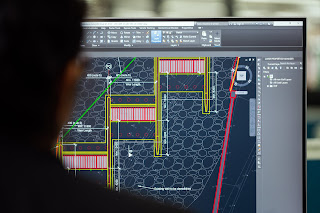Hello, I am your friend Engr. Praveen Kadam / Er. Pravin Kadam has brought it for you. Tender published in news paper.
You can get more information by reading the tender below.
*Advertisement in paper is given below in photo form*
👇👇👇👇👇👇👇👇👇 Tender No. 1👇👇👇👇👇👇👇👇👇
Tender Notice No. 4 Year 2023-24 E-Tendering (Online)
Maharashtra-State Infrastructure Development Corporation Limited (a Government of Maharashtra undertaking) has decided to undertake development works under EPC principle in the state of Maharashtra. In 30 packages under Amravati Regional Division, Managing Director (Authority), Chief Engineer Maharashtra State Infrastructure Development Corporation Ltd. (Employer), inviting tenders from eligible tenderers through online mode.
You can view / download the detailed tender notice and tender form (in EPC format) of the submitted works on the website https://mahatenders.gov.in. Last date for submission of tender will be 12/04/2024 (up to 17:00).
The Competent Authority reserves the right to accept / cancel any or all tenders for the said work without assigning any reason. Conditional tender will not be accepted.
Period available for e-tendering : Dated 10/03/2024 from 10.30 a.m. to d. upto 17.00 on 12/04/2024
Pre-tender meeting : Dated 21/03/2024 at 15.00 hrs
Opening of e-tender (if possible) Dated 15/04/2024 at 15.00 hrs
All the e-tender information is available from the following website.
1. http://mahatenders.gov.in
(If there is any change in this tender notice, it will be notified on the above website.)
2. The notice will be posted on the notice board in the office of Chief Engineer, Maharashtra State Infrastructure Development Corporation Limited, Fort, Mumbai.
Ja.No. Marapasuvim/muam/tender/49/2024
Office of Chief Engineer,
Maharashtra State Infrastructure Development Corporation Limited, Fort, Mumbai
Dated 07/03/2024
(R.R. Hande) Chief Engineer,
Maharashtra State Infrastructure Corporation Limited Mumbai.
👇👇👇👇👇👇👇👇👇 Tender No. 2 👇👇👇👇👇👇👇👇👇
Tender Notice No. 4 Year 2023-24 E-Tendering (Online)
Maharashtra-State Infrastructure Development Corporation Limited (an undertaking of the Government of Maharashtra) has undertaken development of roads on EPC basis in the state of Maharashtra.
It has been decided to implement the works. In 13 packages under Nanded Regional Division, Managing Director (Authority), Chief Engineer Maharashtra State Infrastructure Development Corporation Ltd. (Employer) through. Tenders are invited from eligible tenderers through online mode.
You can view / download the detailed tender notice and tender form (in EPC format) of the submitted works on the website https://mahatenders.gov.in. Last date for submission of tender will be 12/04/2024 (up to 17:00).
The competent authority reserves the right to accept / cancel any or all tenders for the said work without assigning any reason
are Conditional tender will not be accepted.
Period available for e-tendering : Date 10/03/2024 from 10.30 a.m. to d. upto 17.00 on 12/04/2024
Pre-tender meeting : Dated 21/03/2024 at 15.00 hrs
Opening of e-tender (if possible) : Dated 15/04/2024 at 15.00 hrs
All the e-tender information is available from the following website.
1. http://mahatenders.gov.in
(If there is any change in this tender notice, it will be notified on the above website.)
2. The notice will be posted on the notice board in the office of Chief Engineer, Maharashtra State Infrastructure Development Corporation Limited, Fort, Mumbai.
Ja.No. Marapasuvim/muam/tender/47/2024
Office of Chief Engineer,
Maharashtra State Infrastructure Development Corporation Limited, Fort, Mumbai
Dated 07/03/2024
(R. R. Hande)
Chief Engineer,
Maharashtra State Infrastructure Corporation Limited Mumbai.
👇👇👇👇👇👇👇👇👇 Tender No. 3👇👇👇👇👇👇👇👇👇
Tender Notice No. 4 Year 2023-24 E-Tendering (Online)
Maharashtra-State Infrastructure Development Corporation Limited (an undertaking of the Government of Maharashtra) has undertaken development of roads on EPC basis in the state of Maharashtra.
It has been decided to implement the works. In 20 packages under Chhatrapati Sambhaji Nagar Regional Division, Managing Director (Authority), Chief Engineer Maharashtra State Infrastructure Development Corporation Ltd. (Employer) through. Tenders are invited from eligible tenderers through online mode.
Detailed tender notice and tender form (in EPC format) of submitted works at https://mahatenders.gov.in. You can view/download from this website. Last date for submission of tender will be 12/04/2024 (up to 17:00).
The Competent Authority reserves the right to accept / cancel any or all tenders for the said work without assigning any reason. Conditional tender will not be accepted.
Period available for e-tendering :Dated 10/03/2024 from 10.30 a.m. to d. upto 17.00 on 12/04/2024
Pre-tender meeting :Dated 21/03/2024 at 15.00 hrs
Opening of e-tender (if possible) Dated 15/04/2024 at 15.00 hrs
All the e-tender information is available from the following website.
1. http://mahatenders.gov.in
(If there is any change in this tender notice, it will be notified on the above website.)
2. The notice will be posted on the notice board in the office of Chief Engineer, Maharashtra State Infrastructure Development Corporation Limited, Fort, Mumbai.
Ja.No. Marapasuvim/muam/tender/47/2024
Office of Chief Engineer,
Maharashtra State Infrastructure Development Corporation Limited, Fort, Mumbai
Dated 07/03/2024
(R. R. Hande)
Chief Engineer,
Maharashtra State Infrastructure Corporation Limited Mumbai.















